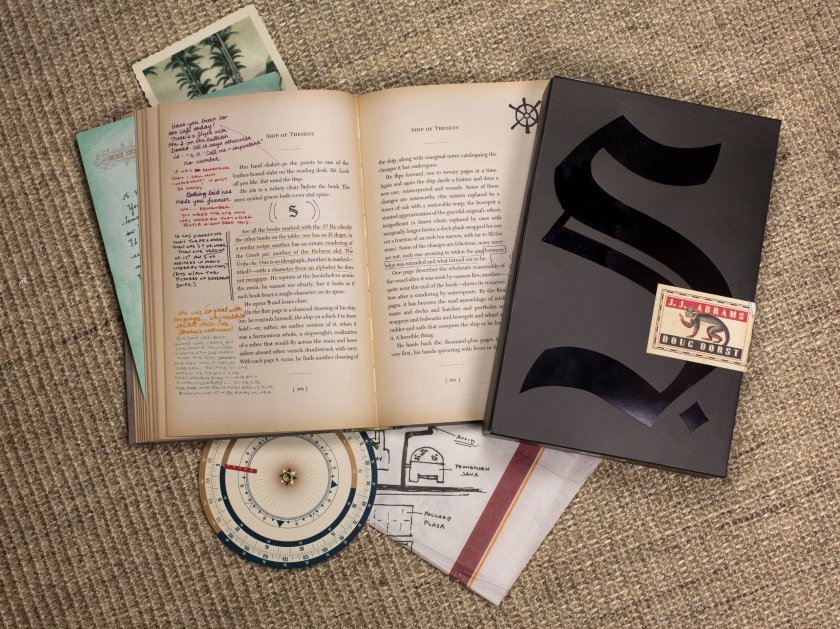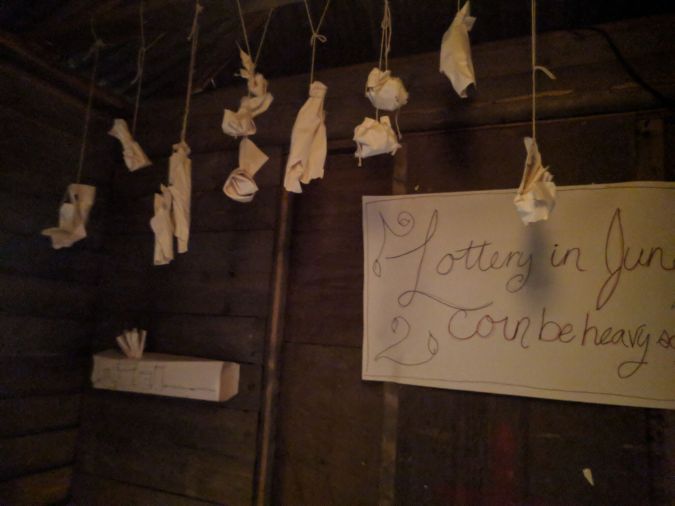 S is a puzzle-novel with feelies, imagined by J. J. Abrams and written by Doug Dorst. The premise is that there’s a novel, The Ship of Theseus, written by the mysterious VM Straka and edited by his devoted editor FX Caldeira. This novel is the object of considerable academic debate and political struggle.
S is a puzzle-novel with feelies, imagined by J. J. Abrams and written by Doug Dorst. The premise is that there’s a novel, The Ship of Theseus, written by the mysterious VM Straka and edited by his devoted editor FX Caldeira. This novel is the object of considerable academic debate and political struggle.
There’s also an ambiguity about the true ending of the book: the Chapter 10 printed here is (fictionally) not the original written by the author, and the “true original” ending has been made available online.
The scholarly debate draws in two students, Eric and Jen, who start leaving one another notes in the margins of the book, and then get entangled in the struggle, and also entangled in one another’s lives. Jen and Eric’s story is organized semi-thematically rather than chronologically with the passing pages: they tend to come back to certain bits of the book to talk about certain subjects. Even the early pages of the book contain notes from late in their relationship. Conveniently, they change pen colors at a couple of key points, which at least tells you what era you’re looking at.
Between the pages, there are a number of other very lovingly made artifacts, including postcards, photographs, letters, and in one case a map hand-drawn on a café napkin. The book is also (for various reasons) full of ciphers and clues, some of which Eric and Jen solve themselves, and some of which have been discussed at great length by internet onlookers. The artifacts are amazing, and the whole book shows tremendous production values.
So it’s a piece that feels like a form of analog interactive fiction, or a classic Dennis Wheatley mystery dossier. Or, also/alternatively, a call-out to literary mystery/romance stories like Possession. I didn’t really find it satisfying either as puzzle or as novel, though, because what it communicates is in fact fairly thin relative to the number of pages and amount of work involved.

 Mike Gentry’s 1998 classic
Mike Gentry’s 1998 classic 


